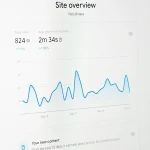In the race for Hybrid mobile app development, flutter vs react native has been a center of debate among most developers and business owners. Flutter is developed by Google whereas React Native is developed by Meta. Google and Meta have put a ton of features in Both Flutter vs react native that benefit the tech giants and software developers. Let’s discuss the major differences between both frameworks and help you decide which one is the right choice for you.
Difference between React Native vs Flutter
Both frameworks React native vs Flutter are increasingly popular in hybrid app development. However, they are slightly different from each other, let’s find out the differences between them
Flutter vs. React Native: Launch Date
React Native, developed by Meta (Formelerly Facebook), was launched in March 2015, quickly gaining traction for its ability to build cross-platform mobile apps using JavaScript and React. Flutter, on the other hand, was created by Google and initially released in May 2017, with its first stable version arriving in December 2018.
React Native vs. Flutter: Architecture
React Native relies on a JavaScript bridge to communicate between the JavaScript code and native components of the platform, enabling the use of native UI elements. This bridge-based architecture allows for flexibility but can lead to performance bottlenecks, especially in applications requiring high responsiveness.
On the other hand, Flutter uses a widget-based architecture built entirely on its custom Skia rendering engine, which renders UI components directly rather than relying on platform-native elements.
React Native’s architecture is better suited for apps needing deep integration with native features, while Flutter offers a more streamlined and efficient structure for building consistent and visually rich apps.
Flutter vs. React Native: Performance
React native utilizes JavaScript to connect the native components through a bridge. This JavaScript bridge of react native makes it slightly slower. On the other hand, flutter uses ahead-of-time (AOT) compilation and a Skia rendering engine which delivers smooth animations and native-like speed without relying on platform-specific components.
React Native vs. Flutter: Development Speed
In terms of development speed, React Native is often faster for developers familiar with JavaScript, thanks to its extensive ecosystem and reusable libraries. Flutter, with its hot reload and widget-based architecture, accelerates UI-heavy app development but may have a steeper learning curve due to its reliance on Dart. React Native is ideal for quick onboarding, while Flutter excels in simplifying the creation of visually-rich apps.
Flutter vs React Native: Popularity
React native was launched earlier and is adopted widely by most developers which makes it more popular than Flutter. On the other end, flutter is comparatively new and has a smaller fanbase. Moreover, flutter is based on the Dart program language therefore the adoption rate among the developers and software engineers is low.
React Native vs Flutter: Documentation
React native offers general documentation and the framework depends heavily on external developer’s kits which makes the documentation difficult for users. Conversely, flutter provides easy-to-read documentation with proper formatting and detailed content. The documentation is more streamlined and straightforward.
Flutter vs React Native: Industry Trend
According to the 2019 StackOverflow survey, 62.5% of developers favored React Native. Moreover, benefiting from its long-standing presence and use of React and JavaScript, which creates more job opportunities.
In contrast, Flutter garnered 65.4% of developer preferences but is still relatively new and less widely adopted by companies, resulting in fewer job opportunities at present. However, this could change in the coming years as Flutter’s popularity continues to grow.
React Native vs. Flutter: Learning Curve
When it comes to the learning curve, React Native is generally easier for developers. Especially those who are already familiar with JavaScript and React, as it uses similar concepts and tools. This makes onboarding faster, and many developers can quickly adapt to building mobile apps with it.
In contrast, Flutter has a steeper learning curve due to its use of Dart, a programming language less commonly known than JavaScript. While Flutter provides a rich set of widgets and tools that make UI development more intuitive, the need to learn a new language can slow down initial adoption. However, Flutter’s comprehensive documentation and growing community support are helping developers learn more efficiently.
Which Framework is better for you?
The choice between Flutter and React Native depends on project requirements, skills, and long-term goals. React Native is better for those familiar with JavaScript and React, offering quicker development cycles and better job opportunities.
With its widget-based architecture and hot reload feature, Flutter suits high-performance, visually rich apps with customizable UIs across platforms. However, it requires learning Dart, a steeper learning curve. React Native is best for speed and flexibility with JavaScript, while Flutter is suitable for highly customized, cross-platform apps.
Conclusion
Overall, both frameworks are great with great community support, and are backed by reputable parent companies like Meta & Google. Going forward with either React Native or Flutter will provide you with the best results. However, you have to assess your requirements, understand your needs, and then choose the framework.









